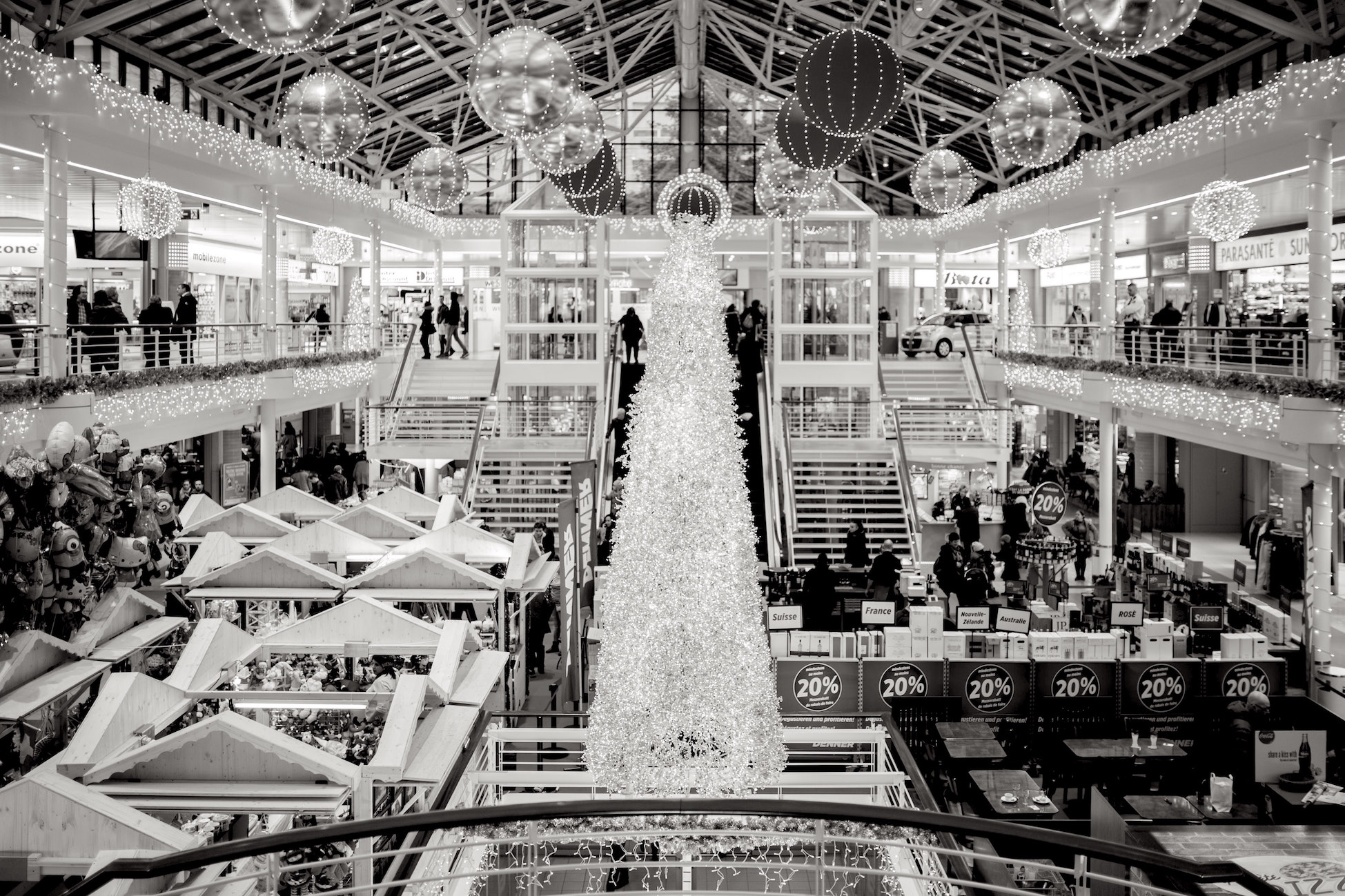Retailers will seek to cap a strong year this holiday season by doubling down on strategies to draw online shoppers into stores, reward their loyalty in new ways and ensure that toys are available at every turn.
Retailers worldwide are riding a wave of optimism this holiday season, propelled by robust financial results in this year’s first three quarters, the strongest consumer confidence levels in 18 years, and a growing sense that online and in-store efforts are harmonizing.
The strategies that best ensure the success of this holiday season are those that entice shoppers into stores, whether to pick up an order made online or to initiate a new purchase. Here are four trends commanding much of retailers’ attention this season.
1. The Optimistic Shopper
Look no further than retailers’ second and third quarter results for evidence of their momentum heading into this season. Last week, Walmart, Macy’s, Nordstrom and others posted strong gains in same-store sales. Several, including Macy’s, Walmart and Home Depot, raised their earnings guidance for the year.
U.S. retailers are reaping the benefit of an economy with decades-low unemployment and steady wage growth. U.S. retail sales in the year’s first half were up 5 percent from a year ago. This all factors into forecasts like that of the National Retail Federation, which predicts November-December sales will grow by as much as 4.8 percent from last year.
Expectations are even higher for online sales, which research firm eMarketer anticipates will increase by 16.3 percent from last year’s November-December total.
Retailers are responding to these heady gains by promoting additional programs to meld online and in-store shopping.
2. Buy-Online/Ship-To-Store
Few programs are getting as much attention and effort from retailers this holiday season as Buy-Online/Ship-To-Store, often called BOSS. It’s the more robust cousin of earlier Buy-Online/Pickup-In-Store, or BOPS, programs.
The difference between the two is significant. Buy-Online/Pickup-In-Store allows shoppers to purchase inventory already stocked in a given store and then retrieve it from that store themselves. By contrast, Buy-Online/Ship-To-Store allows shoppers to choose from anything in the retailer’s entire inventory—whether already stocked in stores, in the warehouse or even shipped direct from the vendor—and pick it up from the store they choose as soon as the retailer has shipped it there.
Retailers see great potential in these types of programs, especially Buy-Online/Ship-To-Store, because it’s far less expensive for them to ship merchandise to their stores through their existing distribution network than to deliver packages to millions of consumer doorsteps. In addition, shoppers visiting a store to retrieve an online order likely will buy additional merchandise during their visit. Retailers like Macy’s and Kohl’s calculate those extra purchases add 20 percent to 35 percent to the shopper’s spend.
Macy’s expanded its BOSS program to all its U.S. stores in the third quarter. Kohl’s began rolling out BOSS to its U.S. stores in the second quarter. Home Depot says that growth of its BOSS and BOPS programs has exceeded its year-over-year online sales growth in the third quarter of 28 percent.
Yet to be determined: How effective can retailers be in incentivizing shoppers to use these pickup services? Kohl’s is enticing shoppers to do so by offering $5 in “Kohl’s Cash” through a new initiative called “Smart Cart.”
3. Experiencing the Rewards of Loyalty
Retailers have enhanced their loyalty programs to retain shoppers in a marketplace where they now have essentially unlimited options for their purchases. Several big retailers have made experiences and access their sweeteners of choice for these programs.
Retailers like Macy’s, Sephora, Nordstrom and Victoria’s Secret have upgraded their loyalty programs this year to reward shoppers with access to exclusive events like fashion shows. At Sephora, that includes meetings with its founders. The platinum tier of Macy’s program gets VIP access to New York City’s July 4 fireworks show and exclusive cooking classes from famous chefs.
Nordstrom recently unveiled its “Nordy Club” program offering shoppers personalized and enhanced services and experiences such as exclusive access to products and events. Those who spend more than $5,000 annually get VIP access to style events and other services.
Retailers anticipate that these enhanced loyalty programs will help them add customers at a time when shoppers, especially millennials, expect to be rewarded for their loyalty.
4. Toys “R” All of Us
The bankruptcy of leading toy retailer Toys “R” Us and subsequent closure of its stores this year left a big hole in the U.S. toy market. The void didn’t go unfilled for long. Numerous retailers, including many well established in the toy market and several newcomers, expanded their toy selection or jumped into the market.
Walmart, Target, Kohl’s and Barnes & Noble have dedicated more shelves and aisles to toys. Others, like Ace Hardware, made their debut in the category. Party City opened dozens of Toy City pop-up stores for this season. Crafts retailer Michaels Cos. has jumped in with a focus on educational toys such as Legos. As Michaels Chief Executive Chuck Rubin said, “Our goal is to be the preferred destination for screen-free, creative play.”
At stake are the $1.3 billion in annual toy sales previously claimed by Toys “R” Us, which amounted to a 4.8 percent share of the overall toy market. Nearly a third of all toy sales occur during the holiday season, setting the stage for many competitors to claim their share in the coming weeks.








